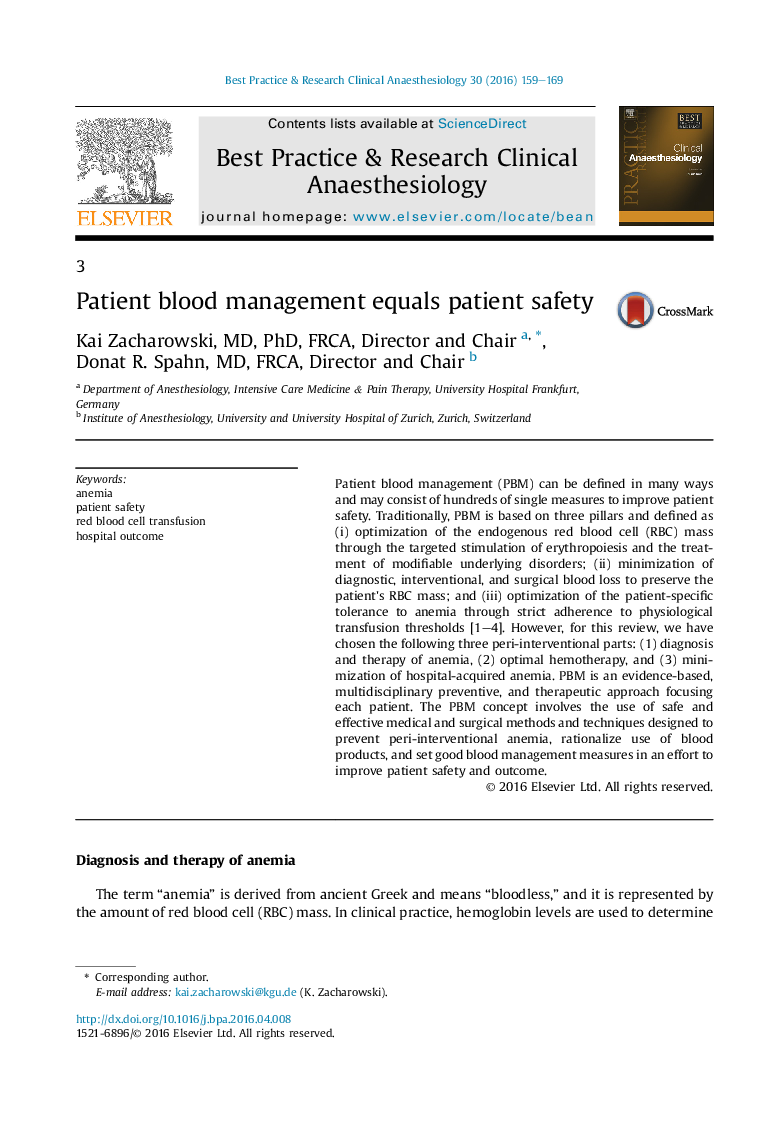| Article ID | Journal | Published Year | Pages | File Type |
|---|---|---|---|---|
| 2748315 | Best Practice & Research Clinical Anaesthesiology | 2016 | 11 Pages |
Patient blood management (PBM) can be defined in many ways and may consist of hundreds of single measures to improve patient safety. Traditionally, PBM is based on three pillars and defined as (i) optimization of the endogenous red blood cell (RBC) mass through the targeted stimulation of erythropoiesis and the treatment of modifiable underlying disorders; (ii) minimization of diagnostic, interventional, and surgical blood loss to preserve the patient's RBC mass; and (iii) optimization of the patient-specific tolerance to anemia through strict adherence to physiological transfusion thresholds [1–4]. However, for this review, we have chosen the following three peri-interventional parts: (1) diagnosis and therapy of anemia, (2) optimal hemotherapy, and (3) minimization of hospital-acquired anemia. PBM is an evidence-based, multidisciplinary preventive, and therapeutic approach focusing each patient. The PBM concept involves the use of safe and effective medical and surgical methods and techniques designed to prevent peri-interventional anemia, rationalize use of blood products, and set good blood management measures in an effort to improve patient safety and outcome.
